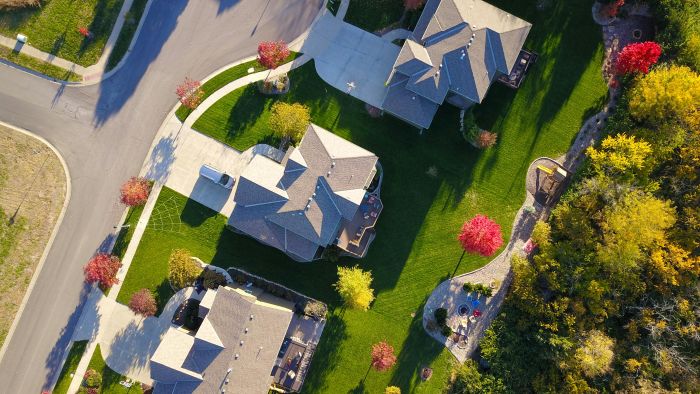The Baton Rouge weather presents unique challenges for every homeowner. From hurricanes to thunderstorms and intense summer heat, the damaging effects can accumulate over time, significantly reducing the lifespan of your roof. This guide explores how these weather conditions affect your roof, enabling you to optimize your investment through effective maintenance.
Different Types of Weather Affecting Baton Rouge Roofs
Baton Rouge is located in Southern Louisiana, which is notorious for its intense heat and UV rays. It can take its toll on your roof over time, such as cracked or warped shingles, faded materials, and weakened roofing adhesive.
Humidity is also a common issue that Baton Rouge homeowners face. As the humidity level rises, it can lead to the growth of mold and mildew, compromising the integrity of your roof.
Severe thunderstorms and hurricanes constantly battle different parts of Louisiana, including Baton Rouge. These rains and thunderstorms bring heavy winds that can uproot the shingles from their place, which can be an issue with weakened adhesives. If there are nearby trees and overhanging branches, the strong winds can topple them over onto your home’s roof.
Meanwhile, heavy and frequent rains make your roof prone to water damage. If you have clogged gutters or poorly maintained roof drainage, it can lead to leaks that threaten the integrity of your roofing system’s foundation.
As Baton Rouge homes experience fluctuating temperatures throughout the year, it’s essential to know how to mitigate the weather’s effects on your roof. But first, you must understand how it impacts roofing materials to know the best way to safeguard them from damage. There are immediate and long-term impacts, so you know how to address them properly.

Immediate Effects of Weather on Your Roof
Every weather disturbance, such as thunderstorms or hailstorms, can have a minor and immediate effect on your roof. You should not ignore those minor signs of damage as they easily add up over time.
The following are examples of the immediate effects that weather has on your roof. Here are some examples of the immediate and short-term damaging effects on your roof:
- High winds during a thunderstorm or hurricane can cause shingles to lift and tear away from the roof.
- Heavy rains and storm damage can degrade roofing materials or cause water to seep into weak spots, potentially leading to leaks.
- Hailstones could punch through the roof and damage the shingles, especially the larger ones.
- High humidity can saturate roofing materials with moisture, causing leaks, especially if the shingles are already damaged.
If you experienced a significant weather disturbance, it is recommended that you have a roofing professional inspect it immediately after. They could spot signs of damage you won’t notice until they affect other parts of your roof system. You must address them before they reach that point, and you have to shoulder costly repairs.
Long-Term Effects of Weather on Your Roof
Now that we’ve examined the immediate effects of weather on roofs in Baton Rouge homes let’s look at the long-term damage. These effects can be an accumulation of short-term weather effects that cause degradation of the roofing materials.
In summer, Baton Rouge homeowners must contend with the intense heat and UV rays. Prolonged exposure to heat can cause significant damage to roofing materials, including cracking and warping. The heat causes the material to expand and contract as the temperature fluctuates during the day. These temperature fluctuations can put tremendous stress on the roof structure, accelerating the breakdown of materials. Over time, it becomes brittle and more prone to damage.
Aside from damaging the roof shingles, excessive heat can also cause degradation of the sealants and adhesives used in roofing. As a result, the shingles won’t stay in place, making your roof prone to leaks.
In spring, other unique challenges cause long-term damage to your roof. Frequent rains are common in springtime, and they can bring excessive moisture to the materials. Rain can penetrate through any cracks or gaps present on the roof, especially if it lacks maintenance or an aging roof.
Certain roofing materials are also more vulnerable to damage from rain, such as asphalt shingles. Prolonged exposure to rain can cause them to crack or curl, which minimizes their ability to keep your home protected from the elements.
Overall, spring rains can be detrimental to a Baton Rouge home’s roof because they weaken the roof structure. The cumulative wear and tear on Baton Rouge roofs can lower their lifespan.
Winter brings a host of other potential problems to your roof. The cold temperatures, snow, and ice can significantly damage your roof, especially during the freeze-thaw cycle. Once the water from the snow and ice seeps into any cracks in the roof, it freezes back again and then thaws once more. This cycle causes the roofing material to expand and contract, potentially resulting in damage to shingles and flashing.
Additionally, excessive snow can cause structural damage to the roof due to its heavy weight. When there is too much snow, it can even risk the roof collapsing.

How Do You Combat Weather Damage to Your Roof?
Understanding how to deal with weather damage is crucial to extend your roof’s lifespan and protect your Baton Rouge home.
The most important step to deal with weather effects is to maintain regular roof inspections. By taking this proactive approach, you can have your roof inspected twice a year. If not, an annual inspection will suffice. Roof inspections before winter or after summer would be ideal to ensure you can address any damage caused by the previous season on your roof. Roofing professionals can identify key roofing danger signals before it’s too late.
When you spot any signs of damage, no matter how minor, it’s crucial to schedule a repair immediately. Delaying roof repair can quickly escalate a minor issue into a significant problem. By addressing issues promptly, you can prevent minor damage from turning into a major headache.
A small investment in roof inspections and repairs can go a long way. By addressing issues early, you can avoid future headaches and potentially save thousands of dollars on a new roof. Waiting too long can lead to costly repairs, making regular maintenance a financially savvy decision.






